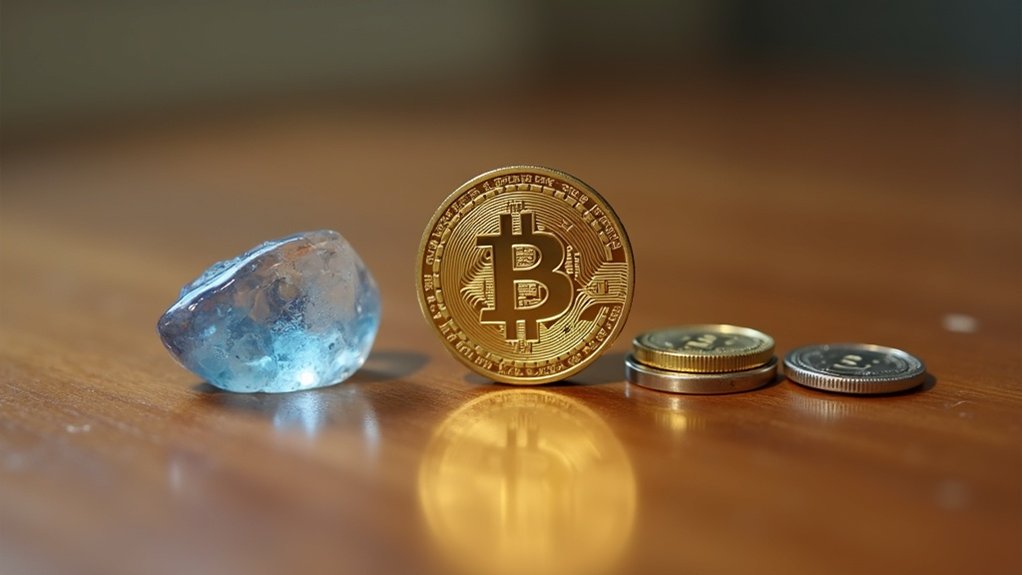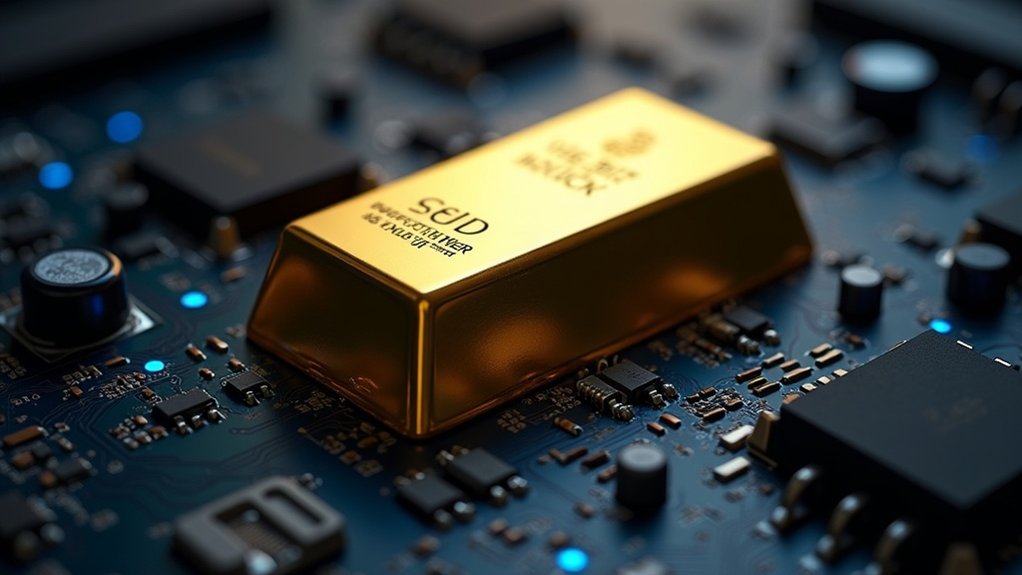Bitcoin dominates the crypto landscape with a staggering $2.37 trillion market cap and $119,000+ price tag. Ethereum follows at a distant second ($537 billion), with XRP surging to third place at $185 billion. Binance Coin and Solana round out the top five, worth $117 billion and $105 billion respectively. Dogecoin and Cardano hover around $33-34 billion, proving even “joke” coins can stick around. The total crypto market? Nearly $4 trillion and counting.
As the cryptocurrency market continues to evolve, Bitcoin maintains its iron grip on the number one position with a staggering $2.37 trillion market cap and a price tag north of $119,000. The grandfather of crypto, dating back to 2009, has cemented its status as “digital gold” with widespread adoption from everyday investors to stuffy institutions in suits. No surprise there. Market size serves as a key stability indicator for large-cap cryptocurrencies like Bitcoin.
Bitcoin’s dominance isn’t new, but those numbers? Astronomical.
Ethereum holds firmly in second place with a $537 billion market cap and tokens priced around $4,600. Not too shabby for the smart contract king. Recent upgrades like EIP-4844 and Pectra have finally addressed the platform’s notorious fees and sluggish performance. BlackRock’s interest doesn’t hurt either.
ETH remains the backbone of most NFTs and DeFi projects. Period.
XRP has clawed its way to third place with a market cap of $185 billion and a price of $3.11. Banks love it. Fast cross-border payments will do that. Ripple’s focus on financial institutions is paying off—literally. Its impressive 380% year-to-date gain has stunned even the most seasoned crypto analysts.
Binance Coin and Solana round out the top five with market caps of $117 billion and $105 billion respectively. BNB at $840 powers the massive Binance ecosystem, while SOL at $196 continues attracting developers with its blazing speed and dirt-cheap transactions.
Shopify integration? Smart move.
The rest of the top 10 tells an interesting story. Dogecoin, the joke that refused to die, sits at $34 billion. Cardano hovers around $33 billion despite limited actual usage. No one’s laughing now. Well, maybe a little.
Avalanche, Shiba Inu, and Polkadot complete the elite club with market caps under $10 billion. Not shabby for tokens that didn’t exist a few years ago.
Together, these cryptocurrencies represent trillions in market value. The market remains top-heavy, with Bitcoin and Ethereum commanding the lion’s share. The overall cryptocurrency ecosystem now boasts a total market cap of nearly $4 trillion, with data refreshing every five minutes for traders.
The crypto landscape has matured, but some things never change.
Frequently Asked Questions
How Do Cryptocurrency Market Caps Compare to Traditional Stock Market Caps?
Cryptocurrency market caps are tiny compared to stock markets. Bitcoin’s $2.37 trillion valuation might sound impressive—roughly Apple-sized—but the entire crypto market barely registers against the $40+ trillion U.S. stock market.
Crypto calculations are messier too, often inflated by locked tokens and pre-mines. Stocks have standardized measurements, fixed trading hours, and actual regulation.
Crypto’s growing, sure, but it’s still the financial equivalent of a scrappy teenager.
Can Market Cap Accurately Predict a Cryptocurrency’s Future Value?
Market cap can’t reliably predict crypto’s future value. Period. It’s a snapshot, not a crystal ball.
While it indicates current size and liquidity, it misses essential factors like technological innovation, real-world adoption, and developer activity.
High caps don’t guarantee continued growth—remember when MySpace dominated social media?
Small-cap projects sometimes explode in value. Others crash and burn.
Market cap is just one piece of a complex puzzle. The crypto world moves fast. Too fast for simple metrics.
Why Do Cryptocurrency Market Caps Fluctuate so Dramatically?
Crypto market caps ride an emotional rollercoaster daily. Why? Investor sentiment shifts on a dime – one tweet from Elon Musk and boom, millions gone.
Low liquidity amplifies every trade. Technology updates or security breaches? Instant price reactions.
Then there’s the macro stuff – interest rates, regulations, institutional money flowing in or out.
No traditional valuation metrics exist, so it’s basically perception driving the bus. And let’s face it, FOMO is one hell of a drug.
How Often Do Rankings by Market Capitalization Change?
Cryptocurrency rankings are in constant flux.
Top spots (1-6) change every 12.6 weeks on average, while mid-tier positions (7-12) shift even faster—about every 3.6 weeks.
Lower ranks? Total chaos. Those coins bounce around weekly.
Only Bitcoin maintains its crown consistently.
The whole system’s like musical chairs on steroids. Real-time updates every few minutes mean rankings can literally change while you’re reading about them.
Older, bigger coins tend to be more stable. The rest? Not so much.
What Factors Beyond Market Cap Should Investors Consider?
Investors need to look way beyond that market cap number.
TVL shows real usage—high numbers mean people actually trust the protocol.
Trading volume matters too; nobody wants to be stuck holding bags they can’t sell.
Developer activity? Essential. Dead GitHub repos = dead projects, period.
Age counts—battle-tested beats shiny-and-new any day.
Then there’s utility (does it actually do anything?), liquidity risks, and those wild volatility swings that’ll give your portfolio whiplash.









